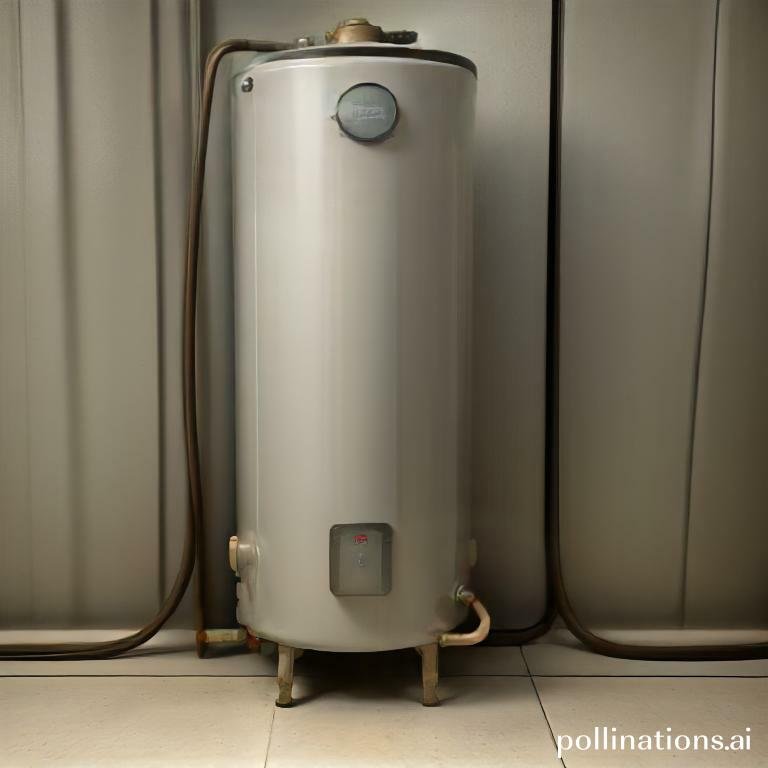
II. Reduces risk of scalding and extends the life of the water heater
III. Environmentally friendly by reducing greenhouse gas emissions and conserving water resources
Lowering the temperature of your water heater can have several benefits. First, it can save you money on your energy bills by reducing the amount of electricity or gas needed to heat the water.
Second, it can prevent scalding accidents, especially for young children or the elderly. Third, it can extend the lifespan of your water heater by reducing the amount of wear and tear on the heating elements.
Finally, lowering the temperature can also help to reduce your carbon footprint and contribute to a more sustainable environment. Overall, setting a lower water heater temperature is a simple and effective way to enjoy these benefits.
Energy Efficiency
In this section, we will navigate the importance of energy efficiency, specifically focusing on lower water heater temperature settings. By adjusting the temperature settings of your water heater, you can significantly reduce energy consumption and save money on your utility bills.
1. Lower Water Heater Temperature Settings
Lowering the temperature settings on your water heater is a simple and effective way to conserve energy. By decreasing the temperature by just a few degrees, you can prevent excessive heating and reduce standby heat loss, which occurs when hot water sits unused in the tank.
2. Energy Savings for Households
Statistics have shown that households that use lower water heater temperature settings can achieve significant energy savings. According to a study conducted by the U.S. Department of Energy, lowering the water heater temperature by 10°F can result in a 3-5% reduction in energy consumption.
This translates to substantial cost savings over time and contributes to a more sustainable environment by reducing greenhouse gas emissions associated with energy production.
3. Tips for Adjusting Water Heater Temperature
When adjusting your water heater temperature settings for optimal energy efficiency, consider the following tips:
- Consult the Manufacturer’s Guidelines: Refer to the user manual or contact the manufacturer to determine the recommended temperature range for your specific water heater model.
- Gradual Adjustments: Make small adjustments to the temperature settings, allowing time for the water temperature to stabilize before further adjustments.
- Test the Water Temperature: Use a thermometer to check the temperature of hot water at different faucets in your home. Aim for a temperature that is comfortable for your needs meanwhile still being energy-efficient.
- Consider Time-of-Use Rates: If your utility offers time-of-use rates, adjust your water heater temperature settings to align with lower-cost off-peak hours.
| Temperature Setting | Energy Savings |
|---|---|
| 120°F | 3-5% |
| 110°F | 6-10% |
| 100°F | 10-20% |
Lower Utility Bills
Lowering the temperature settings of your water heater can have a significant impact on your utility bills. By making a few adjustments, you can enjoy cost savings without compromising on comfort.
Interpretation of how lower water heater temperature settings can lead to lower utility bills
When you lower the temperature settings of your water heater, you reduce the amount of energy required to heat the water. This means that your water heater consumes less electricity or gas, resulting in lower utility bills. By finding the optimal temperature for your needs, you can strike a balance between energy savings and comfort.
Statistics on average savings for households with lower water heater temperatures
Research has shown that households that lower their water heater temperature settings can save an average of 4-22% on their utility bills. This can add up to significant savings over time, making it a worthwhile adjustment to consider.
Tips on how to adjust water heater temperature settings for optimal cost savings
- Consult the manufacturer’s instructions: Before making any adjustments, refer to your water heater’s manual for specific guidance on temperature settings.
- Find the right balance: Experiment with different temperature settings to find the optimal balance between energy savings and hot water comfort.
- Consider safety: Keep in mind that excessively low temperatures can promote the growth of harmful bacteria. Aim for a temperature of at least 120°F (49°C) to ensure safety.
- Insulate your water heater: Wrapping your water heater with insulation can help retain heat, further reducing energy consumption.
Reduced Risk of Scalding
Scalding incidents can occur when water heater temperatures are set too high. In this section, we will navigate the reasons behind these incidents and provide statistics to highlight the importance of adjusting water heater temperature settings. Additionally, we will offer tips on how to reduce the risk of scalding.
Interpretation of how higher water heater temperatures can lead to scalding
Setting water heater temperatures too high can result in scalding incidents. When the water is excessively hot, it can cause severe burns and injuries upon contact with the skin. The higher the temperature, the greater the risk of scalding. It is crucial to understand the potential dangers associated with high water heater temperatures.
Statistics on scalding incidents related to high water heater temperatures
According to recent studies, scalding incidents due to high water heater temperatures are more common than one might think. In the United States alone, thousands of individuals experience scalding injuries each year. Statistics show that a significant number of these incidents are directly related to water heater temperature settings. These numbers emphasize the need for proper temperature regulation.
Tips on how to adjust water heater temperature settings to reduce the risk of scalding
- 1. Regularly check the water heater temperature: Integral to monitor the temperature of your water heater regularly. Ensure that it is set to a safe and recommended level to prevent scalding incidents.
- 2. Adjust the temperature: If you find that your water heater temperature is set too high, take the necessary steps to adjust it. Lowering the temperature can significantly reduce the risk of scalding.
- 3. Install temperature-regulating devices: Consider installing devices such as thermostatic mixing valves or anti-scald valves. These devices help maintain a safe water temperature by automatically regulating it.
- 4. Educate household members: Ensure that all members of your household are aware of the dangers of scalding and understand how to prevent it. Teach them about proper water heater temperature settings and safe practices.

Extended Lifespan of Water Heater
Lowering the temperature of your water heater can have a significant impact on its lifespan and overall performance. By making a few adjustments, you can enjoy a longer-lasting unit that operates efficiently and saves you money in the long run.
1. Demonstration of how lower water heater temperatures can extend the lifespan of the unit
When the temperature setting on your water heater is too high, it puts unnecessary strain on the various components of the unit. This excessive heat can lead to accelerated wear and tear, increasing the likelihood of breakdowns and the need for costly repairs. By lowering the temperature, you reduce the stress on the system, allowing it to operate more smoothly and prolonging its lifespan.
2. Statistics on the average lifespan of water heaters with lower temperatures
Studies have shown that water heaters with lower temperature settings tend to have a longer average lifespan compared to those set at higher temperatures. On average, a water heater set between 120-130 degrees Fahrenheit can last up to 12 years, in the course of units set above 140 degrees Fahrenheit may only last around 8 years. These statistics highlight the importance of maintaining a moderate temperature for optimal longevity.
3. Tips on how to adjust water heater temperature settings for optimal longevity
To ensure the extended lifespan of your water heater, follow these tips for adjusting the temperature settings:
- Consult the manufacturer’s guidelines: Check the user manual or contact the manufacturer to determine the recommended temperature range for your specific water heater model.
- Gradually lower the temperature: If your water heater is currently set at a high temperature, gradually decrease it by a few degrees each day until you reach the desired range. This gradual adjustment prevents sudden temperature fluctuations that could impact the unit’s performance.
- Monitor for optimal performance: After adjusting the temperature, keep an eye on the performance of your water heater. If you notice any issues or a decrease in hot water supply, you may need to make further adjustments or seek professional assistance.
| Temperature Setting | Average Lifespan |
|---|---|
| 120-130°F | Up to 12 years |
| Above 140°F | Around 8 years |

Health Benefits
Water heater temperatures play a crucial role in reducing the risk of Legionnaires’ disease, a severe form of pneumonia caused by the Legionella bacteria. By maintaining lower water heater temperatures, you can effectively minimize the chances of contracting this illness.
1. Lowering Water Heater Temperatures to Prevent Legionnaires’ Disease
Legionnaires’ disease is primarily transmitted through inhaling small water droplets containing the Legionella bacteria. When water temperatures are too high, the bacteria can thrive and multiply, increasing the risk of infection. By setting your water heater to a lower temperature, you create an environment that is less favorable for the growth of Legionella.
2. Incidence of Legionnaires’ Disease and Water Heater Temperatures
Statistics have shown a clear correlation between water heater temperatures and the incidence of Legionnaires’ disease. Higher water temperatures have been associated with a higher risk of infection, particularly in environments such as hospitals, hotels, and residential buildings. By apprehending this connection, individuals can take proactive measures to protect themselves and others.
3. Tips for Adjusting Water Heater Temperature Settings
Adjusting water heater temperature settings is a simple yet effective way to reduce the risk of Legionnaires’ disease. Here are some tips:
- Regular Maintenance: Ensure your water heater is regularly inspected and maintained to prevent the buildup of sediments that can harbor Legionella bacteria.
- Set Temperature to 120°F (49°C): Lower the temperature setting of your water heater to 120°F (49°C) to create an environment that inhibits bacterial growth during still providing sufficient hot water.
- Flush the System: Regularly flush your water heater system to remove any stagnant water that may facilitate bacterial growth.
- Consider Anti-Scald Devices: Install anti-scald devices or mixing valves to prevent water temperatures from reaching dangerous levels.
| Water Heater Temperature | Incidence of Legionnaires’ Disease |
|---|---|
| 130°F (54°C) or higher | Increased risk |
| 120°F (49°C) – 129°F (54°C) | Moderate risk |
| Below 120°F (49°C) | Lowered risk |
Bottom Line
Lowering the temperature of your water heater can bring numerous benefits to your home and the environment. By reducing the risk of scalding, saving energy, and prolonging the lifespan of your water heater, you can enjoy a safer and more cost-effective hot water supply. Additionally, setting a lower temperature can help reduce your carbon footprint and contribute to a more sustainable future. In contrast, it’s important to note that a lower temperature may not be suitable for everyone, especially those with compromised immune systems or households with young children or elderly individuals. Consult with a professional plumber to determine the best temperature setting for your specific needs and preferences.
Overall, setting a lower water heater temperature can be a simple yet impactful way to improve your home’s efficiency, safety, and environmental impact. Take the time to evaluate your current settings and consider making the switch to a lower temperature for a more sustainable and comfortable home.
Read More:
1. Best Practices For Maintaining Consistent Temperature In Water Heater
2. Impact Of Temperature On Water Heater Lifespan














